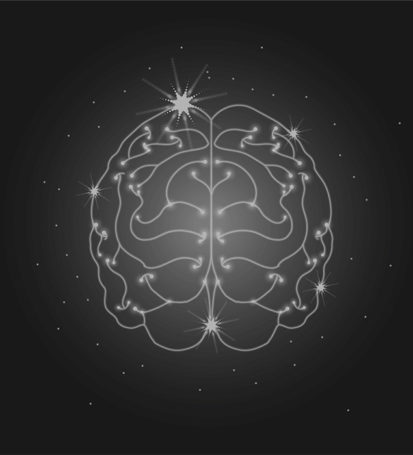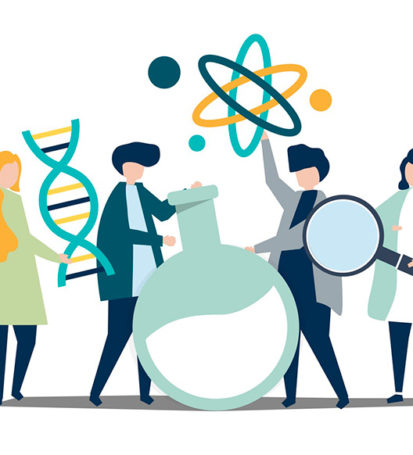The consumption of cannabis provides numerous physical and psychological health benefits. In order to maximize its benefits, it is important to gain general knowledge and understanding of how cannabis reacts with the human body’s endocannabinoid system.
Cannabis produces a positive effect on a number of cognitive functions that influence pain, mood, hunger, sleep, memory, and even fertility. These benefits occur when the cannabinoids interact with neuromodulatory lipids and receptors located in the brain.
Some scientists believe that the endocannabinoid system has been present in organisms dating back to hundreds of millions of years ago. These researchers propose that the key role in the endocannabinoid system is to regulate the delicate balance of elements maintained by essential physiological and psychological processes.
 The Role of the Endocannabinoid System
The Role of the Endocannabinoid System
Endocannabinoid System Definition
The endocannabinoid system (ECS) plays a role in regulating many of the body’s processes such as appetite, pain-sensation, mood, memory, and more. The ECS is primarily composed of three separate parts: endocannabinoids, receptors, and enzymes. These three components work in symbiosis to control the body’s endocannabinoid levels.
Although researchers only identified the endocannabinoid system fairly recently (1990), studies have linked the ECS to fertility, preventing cardiovascular disease, and treating symptoms of neurogenerative diseases such as Alzheimer’s and Parkinson’s. The ECS is a modulatory system, meaning it serves a pivotal part in the body’s release of hormones and its response to stress. Experts believe that maintaining homeostasis, which refers to the stability of your internal environment, is the primary objective of the ECS.
What are Endocannabinoids?
Scientists have identified two types of endocannabinoids: anandamide and 2-arachindonoylglyceral (2-AG). Endocannabinoids are naturally occurring molecules. They are similar to cannabinoids but instead are produced by the body. The endocannabinoids help keep the body functioning smoothly and are formed by the body as needed.
Researchers discovered the endocannabinoid system in 1990 when studying THC in cannabis, hence the name. Because research is relatively new, scientists believe they are merely scratching the surface of the endocannabinoid system’s potential.
What is Endocannabinoid Anandamide? AKA: The “Bliss Molecule”
Anandamide, or the “bliss receptor,” was discovered in 1992 by Dr. Raphael Mechoulam, a professor of medicinal chemistry at the Hebrew University of Jerusalem. The endocannabinoid system and CBD discovery (including most of the significant early work on medicinal cannabis) is attributed to Dr. Mechoulam). Mr. Mechoulam discovered anandamide shortly after the breakthrough of morphine as the most effective painkiller to date. Anandamide is referred to as the “bliss receptor” because of how it mimics the binding to CB1 and CB2 receptors the same way opiates such as morphine do.
What are Cannabinoid Receptors?
In order for the ECS process to take place, endocannabinoids must dock and bind to the cannabinoid receptors found throughout the body. There are two types of receptors:
CB1 – found mainly in the central nervous system and reproductive organs
CB2 – located in the peripheral nervous system, specifically white blood cells, spleen, and tonsils.
Endocannabinoids can dock to either receptor. The subsequent result depends on the location of the receptor and the type of endocannabinoid. For example, endocannabinoids might target CB1 receptors in a spinal nerve to relieve pain. Others might bind to a CB2 receptor in your immune cells to signal that your body’s experiencing inflammation, a common sign of autoimmune disorders.

Receptor expression refers to how an individual’s body reacts to cannabinoids depending on how many receptors they have. When considering the use of medical cannabis, an individual’s receptor expression could play an important role. For example, a person who has above-average CB1 receptors, or over-expresses CB1, may be highly sensitive to THC. Another individual who under-expresses CB2 may experience a higher tolerance to CBD and would need a more concentrated dosage in comparison to other patients.
Receptor expression also describes the concentration of both receptors in different locations in the body. A study published by the British Journal of Pharmacology in 2010 shows that the density of these receptors varies among different regions of the body. Specifically, the brain, central nervous system, and immune system were identified to demonstrate variations in local densities among patients and participants. CB1 receptors were described as being “highly expressed in the central nervous system” with relatively low to moderate expression in the peripheral nervous system. THC was found to be the most ‘receptive’ among both CB1 and CB2 receptor sites as opposed to CBD.
So, Where Does CBD Fit into All This?
Cannabidiol, known as CBD, is natures equivalent to our body’s endocannabinoids and can be found in the cannabis plant. Americans, doctors, and researchers are all starting to see the benefits that cannabis and its by-products can have on the human body, despite the past stigma. Physicians and scientists worldwide have been reporting the positive effects of medical marijuana and CBD with their patients.
CBD Oil Benefits List:
Pain relief
Reduces anxiety
Neuro-protectant
Anticonvulsant
Anti-inflammatory
Antidepressant
Anti-psychotic
Antibacterial
Antispasmodic
Cancer growth inhibitor
Immunostimulant
Reduces blood sugar
Promotes bone growth
Reduces nausea and vomiting
Improves/heals skin conditions
CBD Therapies:
Chronic Pain
Cancer
Fibromyalgia
Anxiety & Depression
Diabetes
Epilepsy
Neuropathic Diseases (Parkinson’s, MS, ALS, Crohn’s)
Arthritis
Skin Diseases and Acne
Post-Traumatic Stress Disorder
Cardiovascular
Alcohol, Nicotine, Drug Addiction
Cure for THC overdose
Sleep Disorders
Summary
CBD helps your body optimize its potential by nourishing your endocannabinoid system naturally. CBD’s effect on the endocannabinoid system, as well as its impact on other areas of the human body, suggests that it may be useful in treating a multitude of medical conditions. Studies have found that a healthy endocannabinoid system supports homeostasis and balance, which may give the body the power to heal itself naturally.
It is believed that CBD does not necessarily treat a specific disease or symptom as much as it facilitates the body’s natural systems and mechanisms, much like lubricating oil facilitates the efficient operation of an engine. The better the oil’s lubrication characteristics, the better the engine’s performance. Research into the possible uses of CBD and other cannabis compounds is a growing area of study, and the list of potential benefits is likely to continue growing.

 The Role of the Endocannabinoid System
The Role of the Endocannabinoid System

